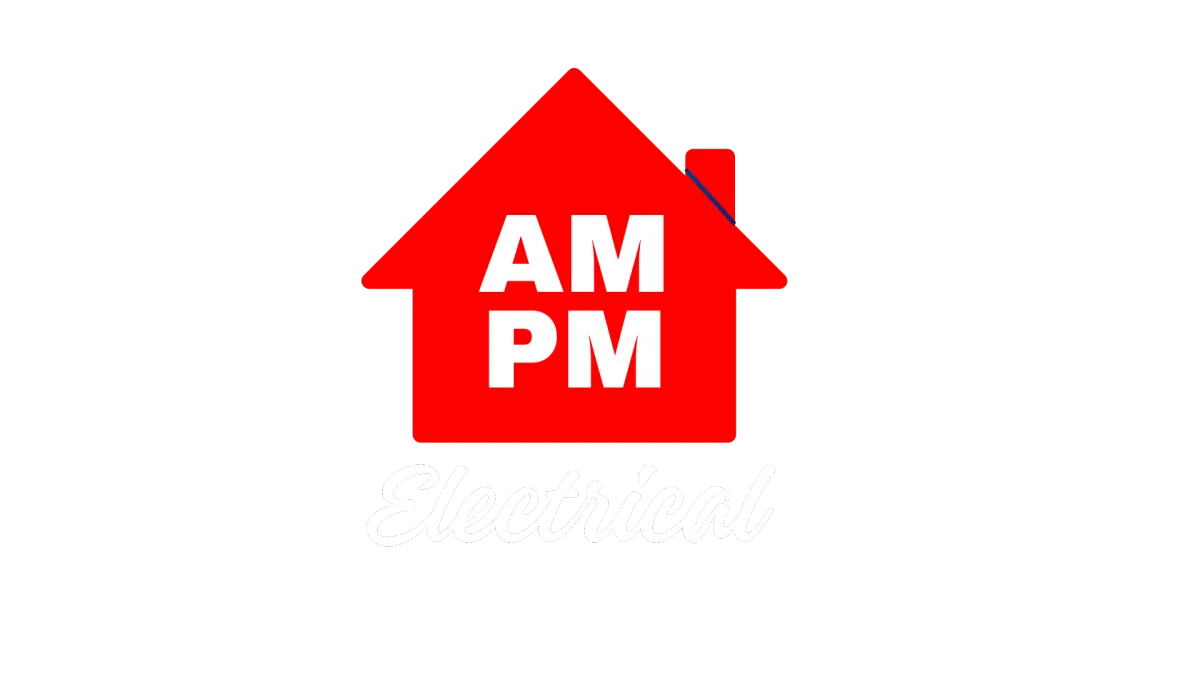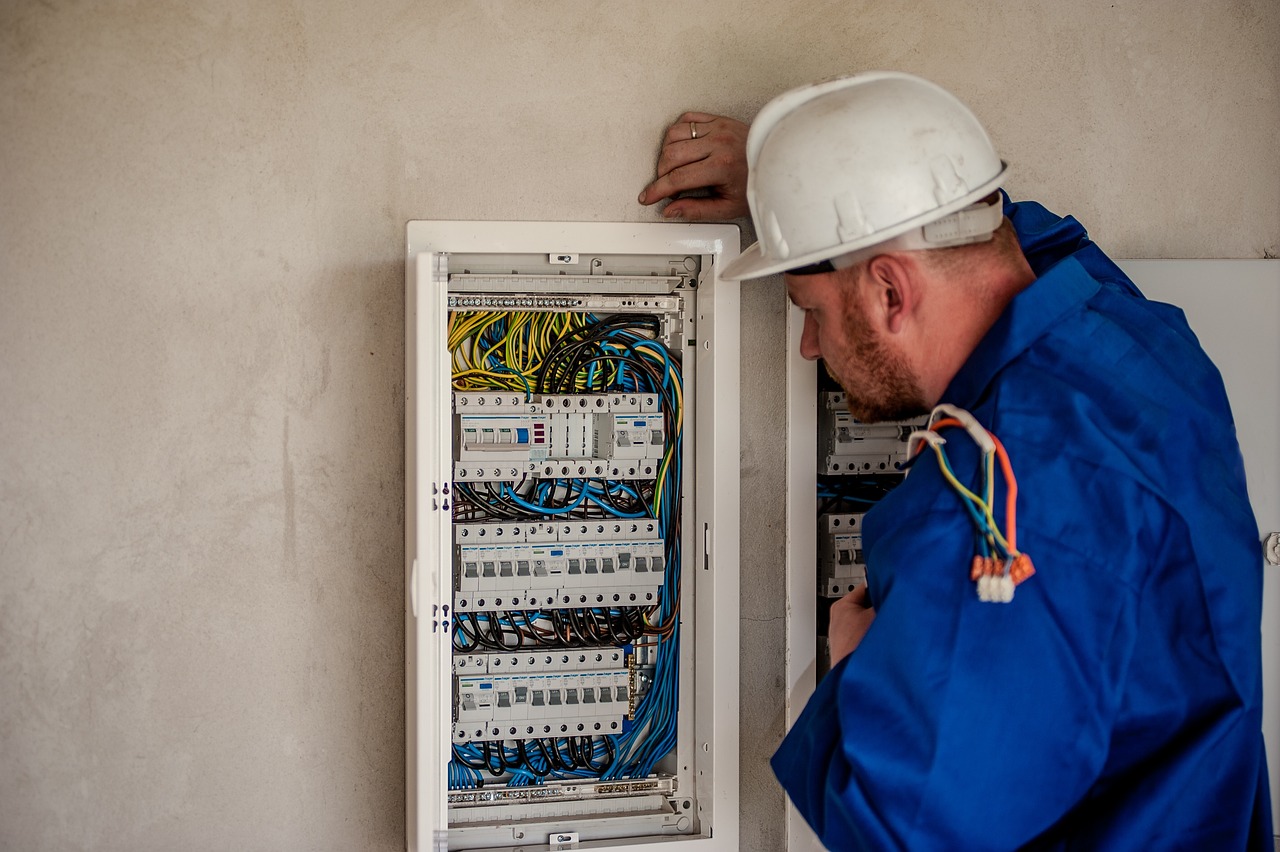

Blogs
Read our Blogs
Our Blogs

Handling Electrical Problems: Home Safety & Solutions Guide

Navigating Electrical Emergencies: Pre-Electrician Safety Measures
Did you know that in the United Kingdom, electrical emergencies can lead to significant damages if not addressed promptly, often including a hefty fee for repairs? This crucial guide is designed to arm you with the essential safety measures to take before your electrician arrives. Here, we'll focus on correctly identifying the type of emergency you're dealing with, safely switching off your power to prevent further damage, and knowing when to evacuate to keep everyone out of harm's way. By following the steps outlined in this post, you'll mitigate risks and better understand what price you can pay if safety is not a priority. So before you dial for emergency service, read on to equip yourself with the knowledge to handle electrical crises effectively.
Identify the Type of Electrical Emergency You’re Facing
Recognizing the signs of an electrical fire and detecting shock hazards are critical steps in managing electrical emergencies safely. Understanding the nature of an electrical fault can mitigate risk and inform whether to reach for a fire extinguisher or cut power to compromised electrical wiring. This section offers essential information on identifying different electrical emergencies, steering you towards the right course of action before a professional arrives.
Recognize Signs of an Electrical Fire
Understanding when you're dealing with an electrical fire is crucial to ensuring the safety of those within the premises. Warning signs include a strong acrid smell, outlets that are discolored or emit smoke, and persistent circuit breaker trips indicating an underlying hazard. An expert would advise that recognizing these signals is the first step in implementing safe and effective interventions.
In the event that one suspects an electrical fire, prompt isolation of power at the circuit breaker is essential. It's not just about shutting off the affected area, but also about preventing the spread and escalation of the fire. This action, before reaching out to professionals via the provided email address or phone, can avert extensive damage and enhance safety protocols while waiting for an electrician to arrive and tackle the issue.
Detect Electrical Shocks and Hazards
When it comes to electrical shocks and hazards, immediate feedback from appliances can indicate a serious problem. For instance, if touching the casing of a refrigerator or other appliance results in a tingling sensation or a mild shock, this may signify a short circuit or a fault in the device's grounding. It's imperative to disconnect the power and refrain from using the appliance until a qualified electrician has resolved the issue to avoid injury and potential liability insurance claims.
The complexity of electrical systems means that shock hazards aren't always visible but can pose significant dangers. If lights flicker, switches are unusually warm, or power tools operate erratically, these could be signs of a deeper electrical fault. Homeowners should err on the side of caution and cut off electricity to the affected area, then promptly contact their insurance to check coverage for electrical emergencies, before seeking professional assistance to ensure a safe resolution.
Turn Off Power at the Main Circuit Breaker Safely
Before emergency electricians arrive, it's essential to take proactive safety measures by learning how to locate your home's main power panel and switch off the main breaker properly—especially under the guidance of regulations from the National Inspection Council for Electrical Installation Contracting. This preventive step can minimize hazards and complement your insurance plan in mitigating risks associated with lighting and other electrical emergencies. The following sections will guide you through these processes, ensuring a safe environment until professional help can assess the situation.
Locate Your Home's Main Power Panel
Familiarity with your home's electrical blueprint is imperative, especially when the need arises to quickly locate the main power panel. Often situated in the basement, garage, or utility area, this panel is the heart of your home's electrical system, housing crucial tools such as circuit breakers and may display a label indicating its licensing details. Turning off all power requires accessing this panel, which can be essential in preventing further cost damage during an electrical emergency.
When a flickering light switch signals a problem beyond the reach of a customer's troubleshooting, understanding the location of the main power panel becomes vital. For safety and compliance with legal guidelines, it should only be operated by someone familiar with its workings or by a licensed professional. Even in urgent situations, handling this central electrical tool without proper knowledge could intensify the risk, leading to devastating consequences.
Switch Off the Main Breaker Properly
Switching off the main circuit breaker is a pivotal step in safely navigating an electrical emergency, and doing so correctly safeguards both property and inhabitants. An electrician's reputation often rests on instructing clients to flip the main breaker by firmly pushing the switch to the "off" position, ensuring that all electricity is shut down. This crucial action can prevent construction hazards and electrical fires, and it’s manageable even for those without technical expertise.
Upon detecting signs of an electrical mishap, responsible homeowners must first cut power by turning off the main breaker, which is more than just flipping a switch—it’s a proactive defense against further damage. Interrupting electricity flow is essential, particularly in scenarios where live wires or electrical malfunctions could escalate into a fire. It’s important to remain calm and precise, ensuring that every step taken under such duress protects the home until the electrician evaluates the situation comprehensively.
Evacuate the Area if Immediate Danger Is Present
When an electrical emergency unfolds, such as a power outage or the detection of an unusual odor from a ceiling fan, taking immediate action to ensure personal safety is paramount. Alerting others to potential electrical risks and moving to a safe distance from the hazard are pivotal steps. This next section provides insights on these crucial safety measures, guiding you through the knowledge necessary for a proper inspection and evacuation procedure in face of imminent danger.
Alert Others to Potential Electrical Risks
In the face of an electrical emergency, user safety is paramount, thus communicating potential risks quickly to all occupants is critical. By sounding the alarm promptly, individuals can halt their current activities and focus on troubleshooting their immediate safety needs. This guidance helps in reducing risk and ensures maintenance of a safe exit strategy for all involved, effectively protecting against hazards until professional help arrives.
A user's experience during an emergency is often fraught with anxiety; therefore, clear and direct communication about the electrical dangers present is essential. Those responsible for alerting others must convey the urgency without causing panic, providing clear instructions for swift evacuation. Highlighting these measures enhances overall safety, making certain that residents and visitors can relocate to a secure location away from potential electrical malfunctions.
Move to a Safe Distance From the Hazard
Once a smoke detector signals the presence of an emergency or if a visible sign like sparks from a wire are spotted, the immediate next step is to move away from the scene. It's crucial to prioritize distance because close proximity to erratic switches or smoldering fuses can escalate into life-threatening situations. An experienced engineer would underscore the importance of swiftly vacating the area to a secure location, significantly reducing the probability of injury from electrical hazards.
Maintaining safe clearance not only shields residents from direct harm but also provides responding electricians unobstructed access to assess and resolve the issue. Should a wire overheat or a switch cause an electrical flare up, the additional space allows for a safer intervention and a reduced chance of cascading emergencies. This practical step, aligned with safety protocols, ensures a conducive environment for professionals to restore electrical integrity to your home.
Avoid Contact With Water Near Electrical Sources
In the midst of an electrical emergency, water can turn a risky situation into a perilous one. It's imperative to steer clear of wet areas during an outage to prevent electrocution. Always ensure your hands are dry before handling any appliances, as moisture can be a conduit for electricity, potentially voiding appliance warranties and causing severe harm. These crucial tips stress the need for careful attention to your power supply and heat-emitting devices, offering valuable communication for safeguarding your home and its inhabitants.
Keep Clear of Wet Areas During an Outage
During a power outage, it's essential to keep a safe distance from any wet areas. Water conducts electricity, and the presence of moisture can create a hazardous situation, particularly if there's unseen damage to electrical systems that could lead to smoke or sparks. Residents should exercise vigilance and refrain from walking through puddles or damp floors, especially near electrical appliances, to avoid the risk of electrical shock.
The aftermath of an outage may not be immediately visible, yet risks linger in the potential interaction between water and electrical sources. To preemptively avoid such dangers, shutting off the main power supply to areas affected by spills or leaks can circumvent further issues until an electrician evaluates potential hazards. Keeping these precautions in mind preserves safety and provides critical protection under unpredictable conditions.
Dry Your Hands Before Touching Appliances
Ensuring dry hands before touching electrical appliances is a simple yet critically important safety step during an electrical emergency. Moisture is a known conductor of electricity, and with wet hands, the risk of receiving an electrical shock is significantly heightened. It's paramount to thoroughly dry your hands to prevent accidental electrocution and safeguard against unexpected malfunctions of appliances, which might already be compromised during a power surge or outage.
In moments of urgency, where speed might seem essential, taking the time to dry one's hands can make a substantial difference in safety outcomes. Electrical devices that have been affected by a power anomaly can be unpredictable, and adding the element of water increases the risks manifold. By ensuring hands are dry, homeowners can mitigate these risks, confidently managing their appliances until a professional can secure the electrical integrity of the home.
Use Appropriate Fire Extinguishers for Electrical Fires
In the midst of an electrical emergency, using the proper fire extinguishing tools is paramount. Familiarizing oneself with a Class C fire extinguisher—an essential device specifically designed for electrical fires—is a critical safety measure. This section will provide a straightforward guide on selecting an appropriate extinguisher and mastering its use to ensure swift and effective responses in emergency situations.
Select a Class C Fire Extinguisher
In the event of an electrical fire, having a Class C fire extinguisher on hand is crucial for safety. These extinguishers are designed to combat fires involving electrical equipment and wiring, as they contain non-conductive extinguishing agents that won't exacerbate the hazard. Homeowners should carefully select a Class C rated extinguisher, ensuring it is readily accessible in areas with a high concentration of electrical devices.
Choosing a Class C fire extinguisher also means understanding its maintenance and operation. It is essential for users to familiarize themselves with the extinguisher's instructions and check it regularly for any signs of wear or expiration. Timely readiness of this device empowers individuals to respond quickly and effectively, potentially preventing the spread of flames and minimizing damage in critical moments before professional help arrives.
Learn How to Use the Extinguisher Effectively
Effective use of a Class C fire extinguisher starts with the acronym P.A.S.S.—pull the pin, aim low at the fire's base, squeeze the handle, and sweep the nozzle side to side. Familiarizing yourself with this technique enhances your readiness for electrical fires, equipping you with the confidence to act swiftly and reduce damage. It's imperative that you practice this process, ensuring it becomes second nature should an emergency arise.
Reacting quickly to an electrical fire hinges on knowing how to operate an extinguisher efficiently. Without hesitation, residents should grab the extinguisher, confirm its pressure is adequate, and discharge it as trained, keeping a safe distance from flames. This ability to respond effectively can prevent a fire from growing, protecting both property and lives until the situation can be fully assessed and addressed by a skilled electrician.
Contact a Licensed Electrician for Emergency Assistance
When facing electrical emergencies, swift contact with a licensed electrician is paramount. Preparing vital information to relay and adhering to professional guidance can significantly impact the outcome. The forthcoming topics will outline steps to collect and communicate concerns accurately, and understand directives given by electricians. Grasping these concepts equips you to actively contribute to the resolution process, bolstering safety until expert assistance arrives.
Gather Information to Relay to the Electrician
Before reaching out to a licensed electrician, it is wise to collect specific details about the electrical issue at hand. Careful documentation of the symptoms, like buzzing noises, burnt odors, or the location of tripped circuits, will provide the technician with a clear starting point for diagnostics. By offering these clear, relevant facts promptly, homeowners facilitate a faster and more accurate response from electrical professionals.
Having the model numbers and brands of affected devices, as well as the age of the electrical system, can aid the electrician in preparing the right tools and parts. It's also helpful to note any recent changes or repairs to the home's wiring or appliances, as this history can significantly narrow down potential causes of the emergency. This preparatory step not only streamlines the repair process but also assures electricians that they are working with informed and proactive clients.
Follow Instructions Provided by Professionals
Upon contacting a licensed electrician, adhering to their directives is paramount for maintaining safety. They possess the expertise to assess the severity of the issue and provide tailored advice that may include isolating affected areas or refraining from using certain appliances. Following their instructions not only secures your immediate environment but also ensures a smooth transition to professional remediation.
It's essential to understand that electricians offer guidance based on rigorous training and experience with electrical emergencies. Processing their instructions with attention and care can prevent the escalation of electrical issues. Trusting their insight allows residents to navigate the precarious period between the detection of an electrical problem and the arrival of professional help with confidence and security.
Conclusion
Navigating electrical emergencies with the correct safety measures is essential before professional intervention. Recognizing the signs of danger, such as electrical fires or shock hazards, and responding by isolating power can prevent further damage and ensure personal safety. Using appropriate fire extinguishers and avoiding contact with water near electrical sources are vital steps in controlling the situation. Ultimately, these preparatory actions, paired with swift contact with a licensed electrician, lay the foundation for a safe and effective resolution to electrical emergencies.